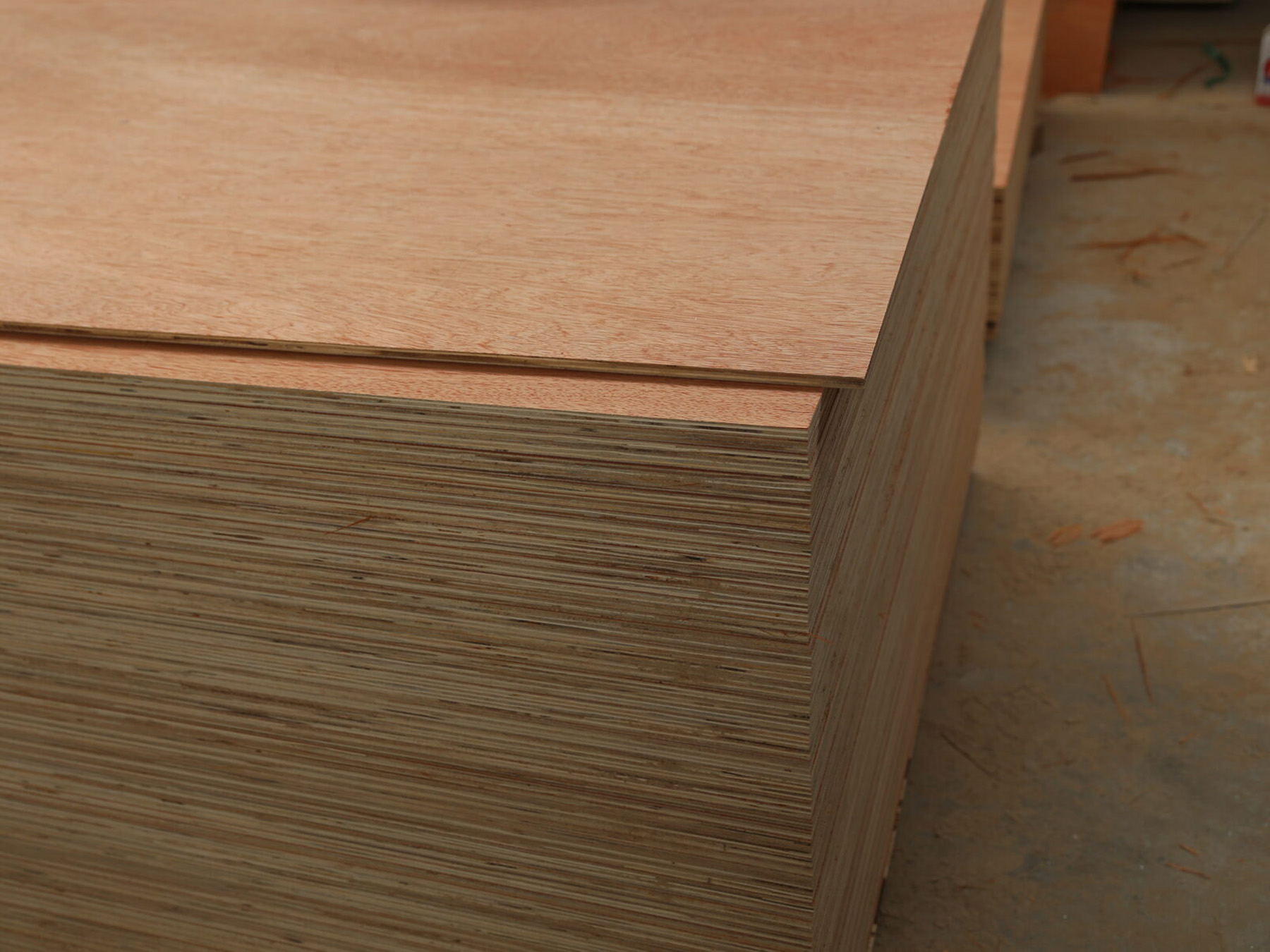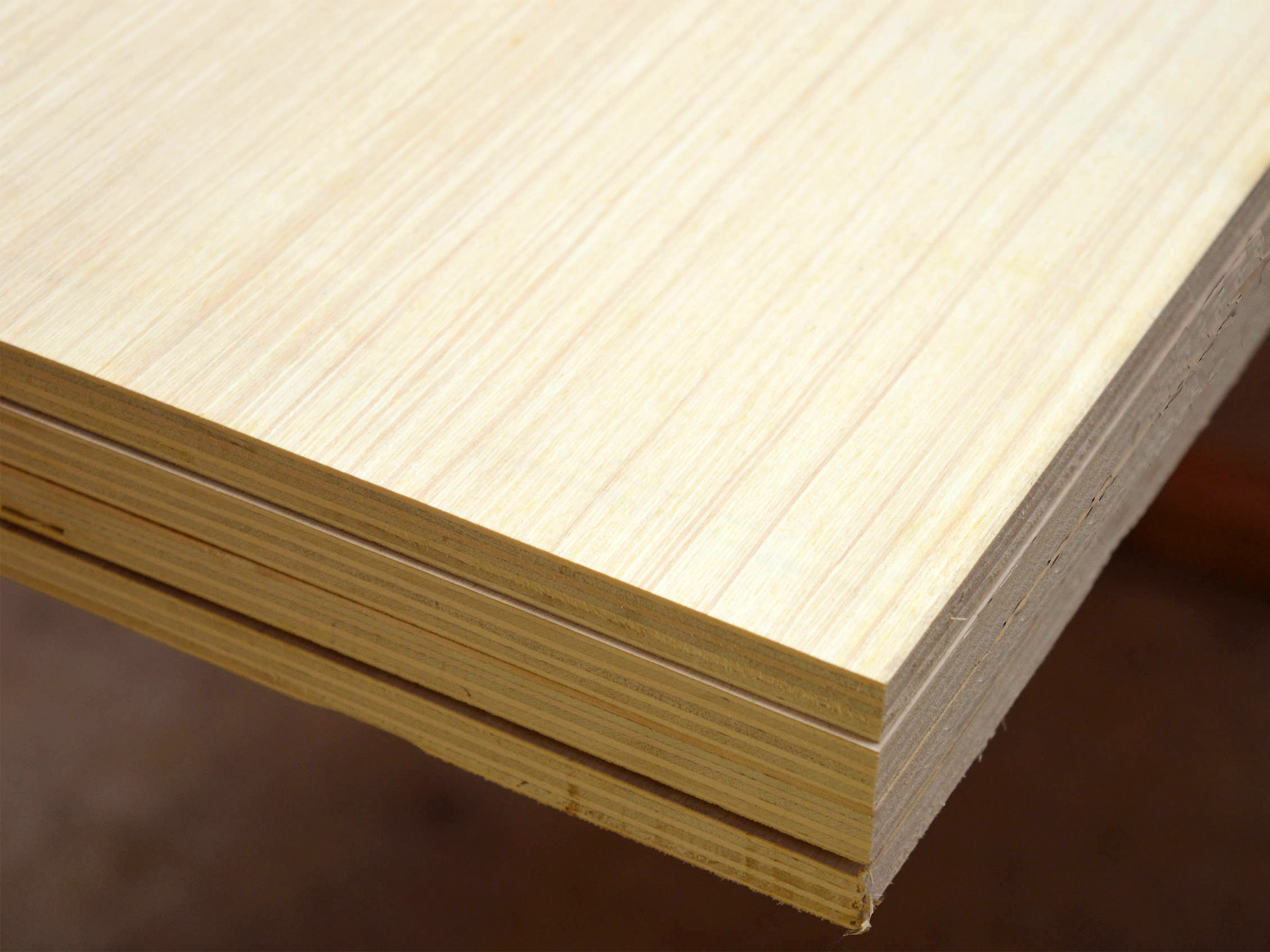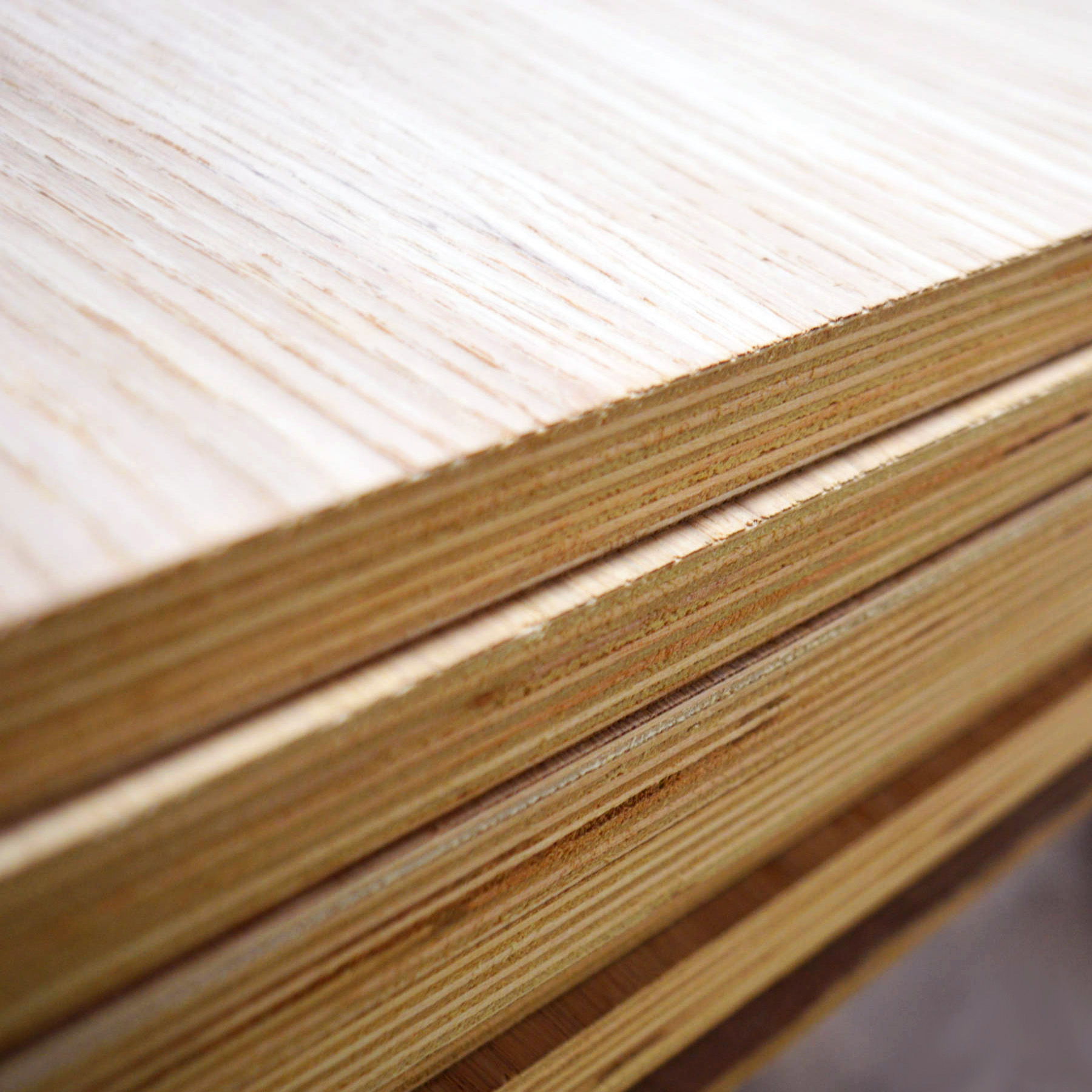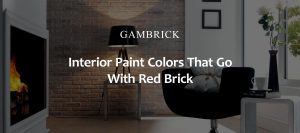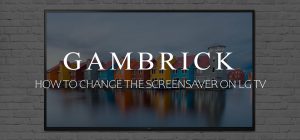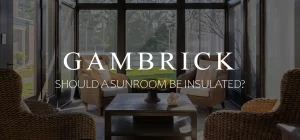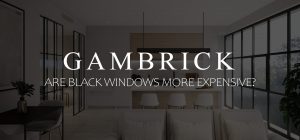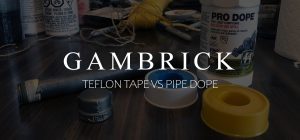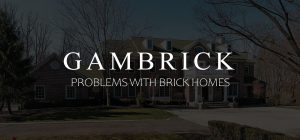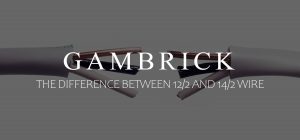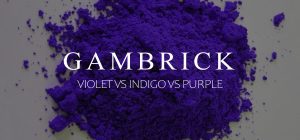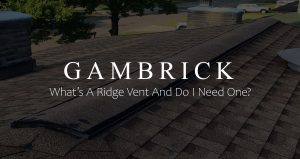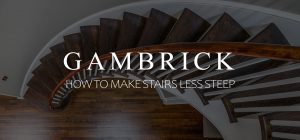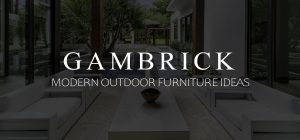Can You Use Plywood Instead Of Drywall?
You can use Plywood instead of Drywall to cover walls and ceilings. It’s stronger, more durable and lighter than Sheetrock. And it doesn’t require finish work like spackling and sanding to look great. Drywall is the standard material used to finished rough framed walls and ceilings. It’s affordable, easy to install and offers both sound and fire protection. But it takes a lot of work to finish properly and isn’t that durable. And it rarely stands out. If you want something different, Plywood panels are a viable alternative. We use it in many of our Modern style homes and commercial buildings to finish walls and ceilings. Plywood is strong, light weight and durable with beautiful texture and coloring. And it’s real wood so you don’t have to spackle, sand or paint it. In most cases just a simple sealer looks fantastic.
Both plywood and drywall and excellent materials. I doubt Finished Plywood will replace drywall any time soon. But it’s nice to have an alternative material for certain areas of the home.
While drywall is a great material that’s used in the majority of homes, it isn’t the only choice for finishing your walls and ceilings. Wood paneling is becoming more and more popular as time goes on. Many designers are tired of using the same smooth painted walls on all their homes and want something different. Plywood brings more warmth, texture and charm. And it makes a space stand out.
Both building materials have their pros and cons, and in some cases, Finished Plywood is the better choice. Understanding both Finished Plywood and Drywall can help make your decision a little bit easier.
Why Use Plywood Instead Of Drywall?
The main reason you would use Plywood instead of Drywall is the appearance. Many top designers are using finished plywood panels instead of drywall because they want more warmth, organic materials and texture in their homes and business spaces. Finished Plywood like Birch is a very different look than painted drywall.
When done right, wood stands out. Drywall is the standard finish so it doesn’t make much of an impact without the right paint. But Finished Plywood looks great all on its own.
There are lots of reasons why Plywood is used instead of drywall. Here are just a few:
- Finished Plywood is real wood.
- Wood has a beautiful warm color and lots of texture.
- Plywood installs much faster then Drywall.
- It’s unique and different. No two Finished Plywood panels are exactly the same.
- Doesn’t require paint.
- It stands out.
While I wouldn’t recommend using Finished Plywood on all your walls and ceilings. It’s a great alternative that can be used along side Sheetrock and other finishes like stone, brick, tile, trim and even plaster.
When you use Finished Plywood instead of Drywall, make sure it’s natural color flows with the rest of the room. I really like it next to Cream Walls and Cabinetry, Travertine, other types of Wood, Earthy Brick and Stone or Concrete.
Finished Plywood is a very Modern look. This may come as a surprise to some, but Modern styled homes include lots of natural materials like wood, stone, concrete, metal and brick. And they tend to rely less on traditional finishes like Sheetrock.
The Benefits Of Using Plywood Instead Of Drywall
There are a few benefits of using Plywood vs Drywall. Here are just a few:
- Weight: Plywood is lighter than Drywall which makes it easier to work with. A 5/8″ sheet of plywood weighs around 60 lbs. But the same size sheet of Drywall weighs about 85 lbs.
- Strength: Plywood is a lot stronger and more durable than drywall. It can resist impacts that would easily damage a Sheetrock wall.
- Installation: Plywood is easier to install vs Drywall because it doesn’t require spackle and sanding. Once the sheet is hung your done. This cuts down a lot on labor costs.
- Appearance: Drywall is the standard wall finish in homes and buildings. But it doesn’t stand out because it’s used everywhere. When Finished Plywood is used correctly it can make a big impact.
Drywall is by far the most widely used finishing material for both homes and commercial buildings. But it’s nice to have an alternative material you can use in places where you want a different look.
Try using Finished Plywood in a bar area, office, cigar or wine room, sunroom, or other special area that’s finished differently from the rest of the home.
How To Install Plywood Panels
Hanging Sheetrock is a long process that involves installing the panels, taping, applying multiple coats of joint compound and then sanding before the wall can be primed and painted. Even a small room can take days to complete because the compound must fully dry before you apply another coat or sand. And it’s a mess that creates tons of fine dust that gets on and in everything.
Even though Drywall is much cheaper than Plywood, it takes a lot more labor to install which can even out the price difference. And Plywood is lighter than Sheetrock of the same size which cuts down on labor.
Finished plywood is much easier to install. Panels can be nailed into place with tiny trim nails with no additional effort. Or you can use glue like Liquid Nails Fuze It Max to secure the panels which leaves a completely smooth surface.
Another install option is using a hidden tract system behind the Plywood which also creates a smooth and fastener free surface.
If you’re using trim pieces to hide the Plywood joints, install fasteners behind the trim to hide them.
Some designers paint the Finished Plywood once it’s installed. In this case you should fill the nail holes with Bondo and sand them super smooth before you prime and paint.
Screws can also be used to install Plywood panels, but they leave a bigger hole in the surface. I don’t recommend using screws unless you’re hiding them with trim or painting.
Can You Install Plywood Over Drywall?
Yes, Finished plywood can be installed as a wall or ceiling material over existing Sheetrock to save time and money. Drywall has a bunch of benefits like insulation R-Value, sound deadening and fire protection. If want to install Finished Plywood but have existing Sheetrock, install the Plywood on top and retain all the Drywall’s benefits.
Installing Plywood over Drywall is exactly the same as installing it directly over the studs. It can be nailed, screwed, glued and installed using a hidden tract system. Just make sure if you nail or screw it that you hit the studs with your fasteners.
Why Not Use Plywood Instead Of Drywall?
Drywall is a fire resistant material. But wood is essentially fuel for a fire. So in some cases Sheetrock is a much better material.
Some building codes require interior walls to have fire resistance. In these cases, Sheetrock can be installed as a fire barrier. For example we’re usually required to install 2 x 5/8 Sheetrock on a garage ceiling with living space above. Plywood doesn’t provide any fire resistance. So if you wanted Finished Plywood in these areas you’d also have to install a fire barrier underneath.
Another reason people choose Drywall is cost. All Plywood is more expensive that Sheetrock. But Finished Hardwood Plywood is a lot more expensive. In some cases over 5x per sheet.
Plywood and Drywall are a very different look.
Drywall has a smooth surface that’s perfect for paint. But Plywood is rougher with grain, texture and in some cases knots. You can still paint a Plywood surface, but it takes more work because you have to fill all the knots and sand the surface smooth.
Drywall also offers some insulation R-Value and sound deafening. But Plywood doesn’t.
Plywood should not be used as a wall or ceiling material in an area that’s very damp without additional protection. High humidity levels can cause Plywood to warp. If you install Plywood in a damp area, it’s very important to seal the edges prior to installation. Moisture is absorbed through the edges much easier than the flat face of the wood. Once the panels are installed, seal the entire surface of the wood.
In addition, plywood should not be installed in below-grade rooms unless vapor barriers are used behind the wood.
Once plywood gets wet, it can grow mold and bacteria. So make sure to keep water out of the wood by thoroughly sealing it.
The Drawbacks Of Using Plywood Instead Of Drywall
Although Plywood is a great material and a good alternative to Sheetrock when used correctly, there are still some negatives.
Here are a few drawbacks to consider:
- Fire: Plywood is less fire resistant than drywall,
- Price: Wood is a lot more expensive than Sheetrock.
- Repairs: If Plywood gets damaged it’s harder to fix than Drywall. Finished plywood is installed as a complete panel. If it gets damaged the entire panel must be replaced.
- Labor: Finished Plywood can be installed a lot faster than Sheetrock, however not as many people know how to work with it. So the cost of labor is typically higher per hour because the workers are more skilled.
- Appeal: Finished plywood works great as an accent. It’s a real eye catcher that should be used sparingly unless you’re designing something unique. The average home will still rely mostly on Sheetrock.
As you can see, Plywood is a great material and a good alternative to Sheetrock, but we use it sparingly as an accent or special feature in our homes. It has lots of great benefits, but there are also some drawbacks and things you should consider before installing it.
What Is Plywood?
Plywood is a manufactured panel made up of several thin wood veneers that are glued and pressed together. Each layer is cross-grained and glued at a 90 degree angle to the layer below. This gives the panel great stability and strength.
Sheets of Finished Plywood have a top layer which is called a face. The face is typically much higher quality wood that the inner layers of the sheet. When you use Finished Plywood instead of Drywall, this is the side of the panel that faces outward.
There are several varieties of plywood, each with a different design and purpose. For example, CDX Plywood has high strength and durability which makes it a great sheathing material. Marine Plywood is chemically treated to resist water damage.
If you’re using Finished Plywood instead of Drywall, I recommend a high quality wood like Birch or Oak. It’s very smooth with a beautiful grain and color.
What Is Drywall?
Drywall, sometimes referred to as Plasterboard, Sheetrock, or Gypsum, is the most common material used to finish walls and ceilings in a home. It replaced plastering because it’s much cheaper, faster and easier to install.
Drywall is a layer of gypsum set between two sheets of thick paperboard. It comes in large sheets or panels that can easily be cut down to size with just a utility knife.
The panels are installed to wall and ceiling studs with screws and/or nails. The seams are then finished with multiple coats of spackle, sanded and then painted.
Gypsum is a non-combustible material that’s made of Calcium Sulfate Dihydrate which has a chalky consistency. Because of this, it has good fire resistance, thermal conductivity and sound insulation.
What’s the Difference Between Plywood & Drywall?
Drywall and Plywood can both be used to finish walls and ceilings. They both come in flat sheets, are about the same size with a similar weight. But because Plywood is made from real wood, it’s a lot more expensive for materials.
Even though Finished Plywood costs more than 5 times the price of Drywall per sheet, it requires a lot less time and labor to install. Depending on what your labor costs are, this can actually make Plywood the cheaper option.
Both materials can be purchased at any Home Depot, Lowes or other home improvement store. But most don’t stock hardwood sheets so you’ll probably have to special order what you need.
The main difference between Plywood and Drywall is the composition of the materials. Plywood is made from real wood and Sheetrock is gypsum wrapped in paper. Both materials can be painted but only Plywood gives you the option of sealing and/or staining.
A major difference between the two material is fire resistant. Drywall is so fire resistant that a thick enough layer can act as a fire barrier. For example, we install two layers of 5/8 Sheetrock when building living space above a garage to help slow down and contain fires. Plywood provides no fire resistance at all because it’s wood.
Sheetrock is also better than Plywood at containing sound and provides more insulation R-Value.
Both materials are installed flat against wall and ceiling studs using screws or nails. But Plywood can also be installed using clips or hidden tracts. This gives the surface a much cleaner finish.
Can You Use Plywood For Walls Instead Of Drywall?
Yes, Finished Plywood can be used as a wall covering instead of Drywall. It can be installed with nails, screws or a hidden tract system which hides the fasteners. Use a Finished Hardwood Plywood with a smooth surface. Buy sheets that are at least 1/2″ thick because they’ll be stronger and less prone to warp or twist.
Finished Plywood panels can be stained or sealed before or after you install them. I like to do it after. However, I seal the edges before I install the panels. This helps prevent moisture absorption.
I recommend installing the panels with a hidden tract system if you’re staining or sealing the panels. A surface without visible fasteners is a much cleaner look. But if you’re painting the panels I’d use nails along with Bondo and a little sanding.
If you’re installing trim boards over top the Plywood seams, drive your fasteners under the areas that will be covered by trim. This gives you smooth surface that’s free of fasteners.
You can also use glue to install Plywood Panels to a wall. I like Liquid Nails Fuze It Max. It’s very strong and dries quickly. By using glue you’ll have a clean surface that’s free of fasteners. But if you ever have to replace or repair a panel they’ll be very hard to remove so use glue with some caution.
Can You Use Plywood For Ceilings Instead Of Drywall?
Yes, Finished Plywood can be used as a ceiling covering instead of Drywall. It can be installed with nails, screws or a hidden tract system which hides the fasteners. Use a Finished Hardwood Plywood with a smooth surface. Buy sheets that are at least 1/2″ thick because they’ll be stronger and less prone to warp or twist.
Finished Plywood panels can be stained or sealed before or after you install them. I like to do it after. However, I seal the edges before I install the panels. This helps prevent moisture absorption.
If you plan on painting the panels but used nails or screws to install them, make sure to cover the holes. I use Bondo instead of wood putty because the surface quality is smoother.
If you’re installing trim boards over top the Plywood seams, drive your fasteners under the areas that will be covered by trim. This gives you a smoother surface free of fasteners.
You can also use glue to install Plywood Panels to the ceiling. I like Liquid Nails Fuze It Max. It’s very strong and dries quickly. By using glue you’ll have a clean surface that’s free of fasteners. But if you ever have to replace or repair a panel they’ll be very hard to remove.
When gluing Plywood to a ceiling, you need to build temporary supports that can hold the panels in place while the glue dries. This may take a full day for the glue to grow strong enough to hold the panel. You can also use some small trim nails to hold the panels but they’ll be visible unless you paint or cover them with trim later.
If you use supports, make they hold the panels firm against the ceiling. If there’s any slack the panels will sag.
Can Plywood Be Finished Like Drywall?
Yes, once Finished Plywood panels have been installed, the seams can be filled with joint compound, Bondo or wood filler and sanded smooth to give the appearance of drywall. The panels can then be sanded with a fine grit sandpaper to achieve a paint ready finish.
Plywood is made by gluing multiple thin layers of wood veneer together in stacks. The top layer is generally the highest quality wood with the best finish. This is the layer that should face outward.
If you want to mimic the appearance of Drywall with a wood wall, choose a smooth Plywood like Birch. Pure Birch Plywood is super smooth with very few knots so it’s easy to paint.
My favorite product to fill Plywood joints is Bondo. It’s more expensive than joint compound of wood putty but the finish is much better. Once the Bondo is mixed and applied to the joint, let it dry. Then sand it smooth with a fine grit sandpaper. Bondo sands so fine that you can’t see it once the surface is primed and painted.
Make sure you prime the Plywood at least once before you paint. Priming lets you see areas that are rough or uneven. If you find an issue, fix it with more Bondo, filler or compound, sand and prime again.
Once you’re done priming and don’t find any issues, start painting. 2-3 thin coats generally works best.
Even though wood is an absorbent material and sucks up paint, because you primed first painting Drywall and Plywood will feel the same. The wood won’t absorb excess paint because you’re actually applying paint to the primer and not the wood.
Are Plywood Walls Cheaper Than Drywall?
No, Plywood walls are more expensive than Drywall. Plywood is made from real wood which is very expensive. When Plywood is used inside a home instead of Drywall, you need a higher grade panel that’s usually made from either Oak or Birch. A 1/2″ Oak or Birch Plywood panel costs over $80 per 4 x 8 sheet. The same 1/2″ x 4 x 8 sheet of Drywall only costs about $15.
Then you have to consider installation costs. Drywall is a more common material that’s used in just about every home. So labor costs are cheaper per hour. But there’s taping, applying several layers of joint compound and sanding to do. Plywood requires less additional finish work, but it’s specialized so hourly rates for labor is higher. It’s hard to say which is cheaper to install because every job is different, but wood work is almost always more expensive than Sheetrock.
When you consider long term costs, Drywall is cheaper. Even though Plywood is stronger and more durable, if a panel gets damaged the entire panel usually needs to be replaced. The only exception is when the Plywood is painted. In this case you just fill the damage with Bondo, sand and repaint.
When Drywall is damaged, you simply apply compound, sand and paint. it’s quick and easy.
Overall Installing Plywood is more expensive than Drywall. The extremely high cost of materials makes Plywood a very expensive way to finish walls and ceilings.
Can I Use Plywood Instead Of Drywall Behind Cabinets?
Yes, this is actually a trick we builders use to make cabinet installation easier. It’s a good idea to have a strong and stable backing behind upper and base cabinets. The entire area behind the cabinets doesn’t need to be Plywood, all you need is about a 12″ thick strip along the entire back.
Before I install my cabinets, I cut a strip of drywall out and install an equal thickness strip of Plywood to the studs. This gives the cabinets a strong and stable backer and a thick area for me to drive my cabinet screws.
When I drive in my cabinet screws, I still try to aim for the studs. But having some plywood to catch the screw makes the job a little more forgiving. It also makes the screws a bit stronger because they grip not only the stud but also the plywood.
What Kind Of Plywood Do You Use For Interior Walls?
The best type of plywood to use indoors is either Oak or Birch. I prefer Birch. Both species are smooth and sandable with very few knots. They also have a nice grain and good color which makes them suitable for staining or sealing.
Because Birch and oak are such a hard wood, they can be sanded super smooth. This makes the Plywood great for painting.
The best thickness to use is around 1/2 inch which is generally considered a 3-ply Plywood. This is strong and stable enough to lay flat against the studs without warping.
How Thick Should Interior Plywood Walls Be?
The best thickness for interior Plywood walls is 1/2 inch. This is thick enough to ensure the wood won’t easily warp or twist and provides enough thickness so that you can sand it smooth. This is usually a 3-ply Plywood. I recommend a hard wood plywood for interior walls and ceilings like Oak or Birch. Birch is always my first choice.
Can I Use Plywood Instead Of Drywall Inside A Garage?
You can use Plywood instead of Drywall inside a garage to cover your walls and ceilings. However, in some places a fire barrier of Drywall is required by code. Typically we install a double 5/8th layer of drywall on any wall shared with a living space. In these areas I wouldn’t install the Plywood.
If your garage is detached from the home, you won’t have common walls to consider. So you should be able to install Plywood on the walls and ceilings without violating any building or fire codes.
Every area is a little different. So to be sure, contact your local building department or fire code enforcement office before installing any Plywood on your garage walls.
Summary: Can You Use Plywood Instead Of Drywall?
You can use Plywood instead of Drywall to cover walls and ceilings. It’s stronger, more durable and lighter than Sheetrock. And it doesn’t require finish work like spackling and sanding to look great. Drywall is the standard material used to finished rough framed walls and ceilings. It’s affordable, easy to install and offers both sound and fire protection. But it takes a lot of work to finish properly and isn’t that durable. And it rarely stands out. If you want something different, Plywood panels are a viable alternative. We use it in many of our Modern style homes and commercial buildings to finish walls and ceilings. Plywood is strong, light weight and durable with beautiful texture and coloring. And it’s real wood so you don’t have to spackle, sand or paint it. In most cases just a simple sealer looks fantastic.
Both plywood and drywall and excellent materials. I doubt Finished Plywood will replace drywall any time soon. But it’s nice to have an alternative material for certain areas of the home.
While drywall is a great material that’s used in the majority of homes, it isn’t the only choice for finishing your walls and ceilings. Wood paneling is becoming more and more popular as time goes on. Many designers are tired of using the same smooth painted walls on all their homes and want something different. Plywood brings more warmth, texture and charm. And it makes a space stand out.
Both building materials have their pros and cons, and in some cases, Finished Plywood is the better choice. Understanding both Finished Plywood and Drywall can help make your decision a little bit easier.
If you have any questions or comments email any time.

